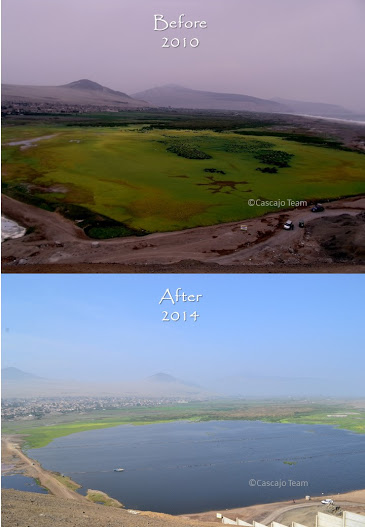The Nanotechnology Miracle: How Nanotechnology saved a contaminated lake in Peru
The Cascajo Wetlands in the 90s: A pristine landscape of lakes and meadows, home to more than a thousand species of migratory birds, and an oasis of peace and relaxation.
What happens though when a natural paradise we remember fondly from childhood is on the brink of complete and devastating collapse? When the land is choked with rubbish and the lake filled with poison? Do we return to the place we were once so happy to save it? This is exactly what Peruvian-Japanese scientist Marino Morikawa did: In 2010, his father told him that the Cascajo wetlands were so contaminated that they were about to be capped. Although the environmental scientist was working at Tsukuba University laboratories in Japan at the time, he decided to fly the 15,000 km back to Peru to see with his own eyes what his father had told him about El Cascajo.
....
Marino’s family is well-known in their hometown Huaral, and they also just happened to be friends with its current mayor. So the first thing Marino did was set up a meeting with him. “Give me just one year and I’ll do everything in my power to restore the wetlands,” he said. “Just you?” the mayor asked. “Under my administration we tried to save the wetlands many times, but we couldn’t.” Marino replied: “I know, but you won’t have to worry about anything. It won’t cost you a cent, it’ll be my responsibility.”
The mayor agreed to the ambitious project, and Marino started knocking on doors to raise money. Unsuccessful in Peru, he tried his luck in Japan: He took all his savings, borrowed money from three banks, and returned to Peru. It was all his personal commitment: No one refunded him the money.
The nanotechnology system
Marino started off by camping in the wetlands for three days to identify the sources of contamination. He counted the approximate number of people who passed through the wetlands, he analyzed water and soil, and he studied the winds. Afterwards, he returned to Japan to develop adequate technology in the well-equipped laboratories of Tsukuba University. Since he had focused on nanotechnology and chemistry during his studies, he decided to deploy two nanotechnology methods in El Cascajo: a micro-nano bubbling system and a biofilter.
The micro-nano bubbling system consists of introducing microbubbles in the depths of polluted waters that attract bacteria and polluted microorganisms. “Think of soda bubbles,” explains Marino. “Everybody can see the bubbles rising to the surface. Now imagine a bubble ten-thousand times smaller and imperceptible to the human eye. Since it is so small, it is a lot slower and takes 5 to 8 hours to reach the surface. The micro-nano bubble has an electromagnetic field of positive and negative ions that works as a magnet. On the way to the surface of the water, it attracts viruses and bacteria, thus catching them like in a spider’s web.”
- See more at:
http://www.tea-after-twelve.com/all-issues/issue-02/issue-02-overview/chapter3/the-nanotechnology-miracle/#sthash.oNrZgDvl.dpuf

Also a cool little video here:
https://www.facebook.com/playgroundenglish/videos/316222158711121/
